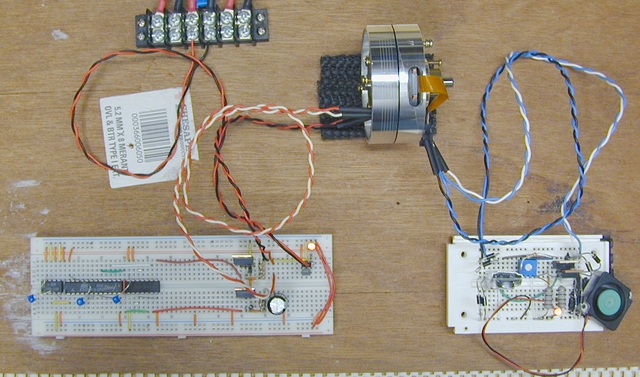- Mon Apr 28, 2008 8:38 am
#47217
What range distances are you interested in? Indoors or outdoors? One thing to consider is that these parts have internal DC-coupled amplifiers so you might, and probably will, encounter saturation from ambient illumination. It might be better to consider PINs or APDs and separate, AC-coupled, electronics.
automata wrote: ... the Edmund Scientific photo diode operating at 35 MHz might work for a highspeed photodetector.Well, I tested the 15MHz version on the bench and I did get 15MHz through it, but I don't know what the phase/frequency delay curve looks like. Can't help at all with the 35MHz part.
What range distances are you interested in? Indoors or outdoors? One thing to consider is that these parts have internal DC-coupled amplifiers so you might, and probably will, encounter saturation from ambient illumination. It might be better to consider PINs or APDs and separate, AC-coupled, electronics.
Tom
http://78.46.38.217/amb9 Cape Coral Ambient Stereo
http://78.46.38.217/amb9u Ultrasonic (ambient -20kHz )
http://78.46.38.217/vhf9 Cape Coral All-channel Marine VHF
http://78.46.38.217/vlf9 Cape Coral VLF Lightning, spherics
http://78.46.38.217/amb9 Cape Coral Ambient Stereo
http://78.46.38.217/amb9u Ultrasonic (ambient -20kHz )
http://78.46.38.217/vhf9 Cape Coral All-channel Marine VHF
http://78.46.38.217/vlf9 Cape Coral VLF Lightning, spherics

